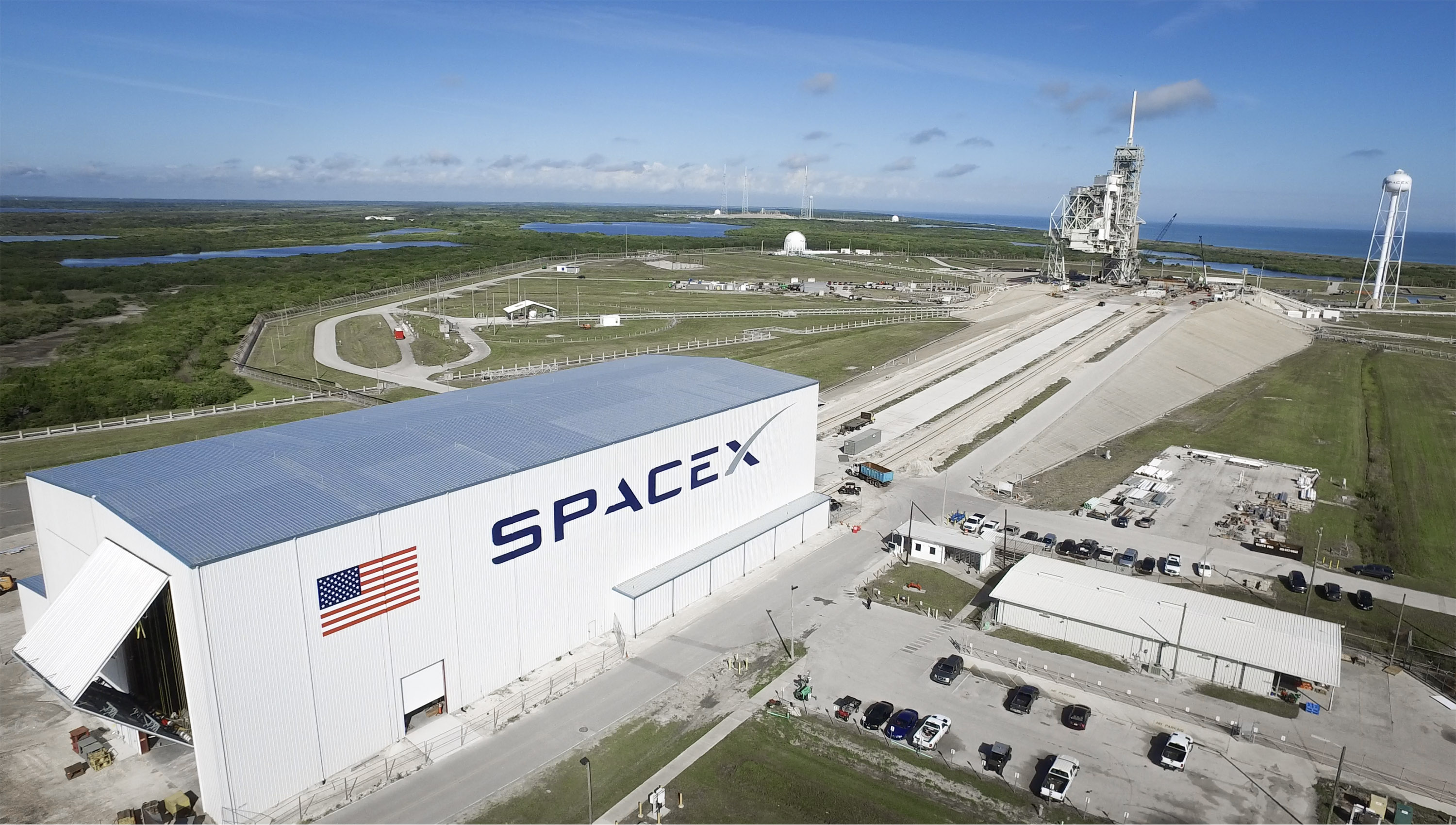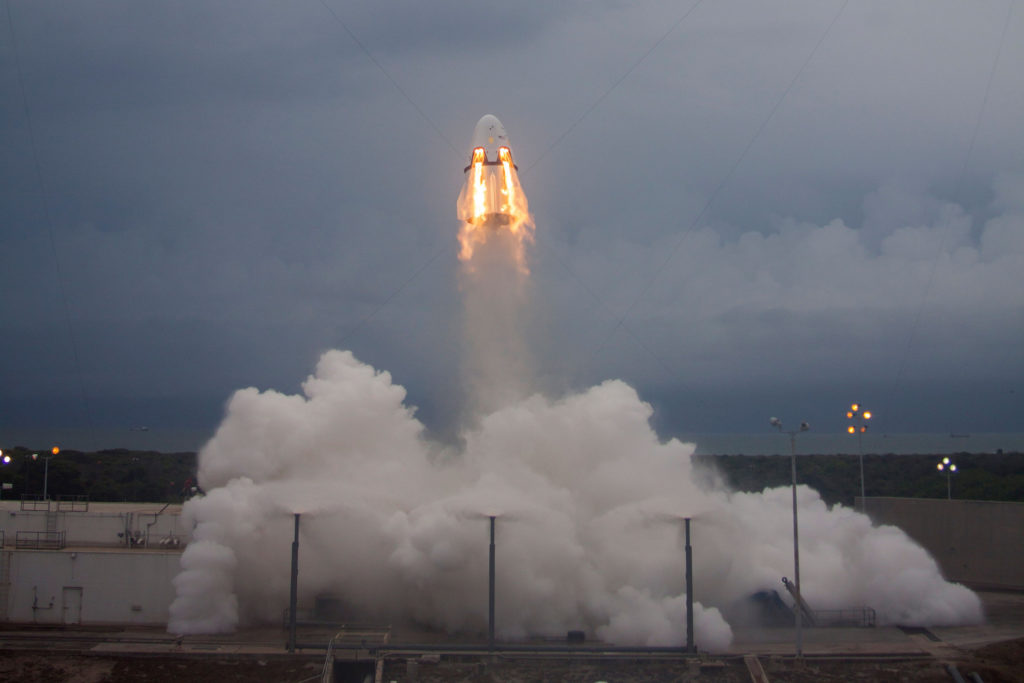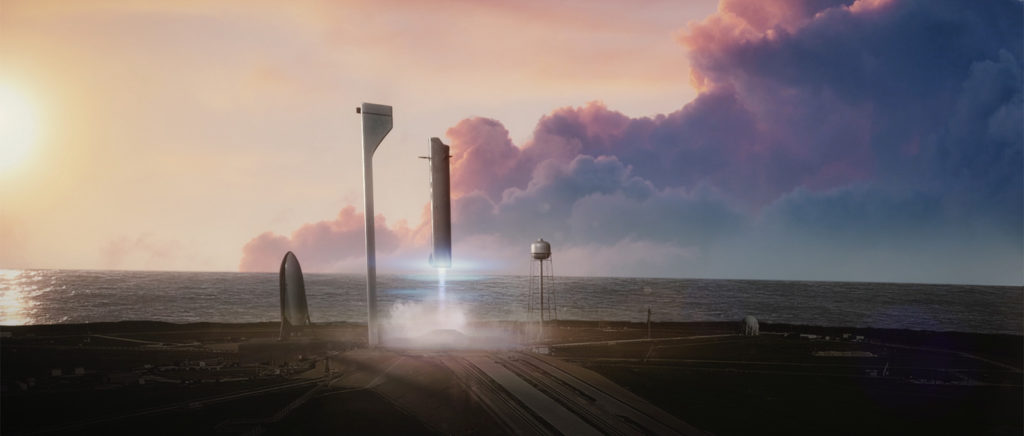

News
SpaceX had a big year: 2016 year in review
On December 21, 2016, SpaceX celebrated the one-year anniversary of Falcon 9’s first ever successful stage one landing, leaving their mark on history with the first rocket to ever do so after delivering a payload into orbit. The mission delivered 11 ORBCOMM satellites into low-Earth orbit to complete a 17-satellite constellation network.
Several videos were published with footage of the event last year, but National Geographic gave us a behind-the-scenes look at Elon Musk’s emotional ride while it was happening as an anniversary treat.
The first landing anniversary wasn’t the only thing to come out of 2016, however, and what a year it was!
MORE HISTORIC SPACEX LANDINGS
On April 8, 2016, SpaceX made history again, that time by landing Falcon 9’s first stage booster onto the “Of Course I Still Love You” autonomous droneship in the Atlantic Ocean off the Florida coast. The mission’s payload was a Dragon capsule cargo shipment to the International Space Station (“ISS”) named CRS-8, itself containing an important space technology demonstration for expandable habitats. The Bigelow Expandable Activity Module (“BEAM”) carried in the Dragon capsule was later successfully docked to the ISS and inflated as planned.
On May 5, 2016, SpaceX landed yet another first stage booster on drone ship “Of Course I Still Love You”, but the destination of its payload was geostationary transfer orbit (“GTO”), about 36,000 kilometers above the Earth vs. the 160 to 2000 kilometer height of low-Earth orbit previously achieved before a landing. The higher GTO orbit brought the first stage of Falcon 9 to a much faster speed and higher reentry heating than the previous missions, making the successful landing yet another one for the history books. Its payload was the JCSAT-14 commercial communications satellite.
Another successful GTO mission with a droneship landing was completed on May 27, 2016, and its THAICOM-8 payload was then delivered to a supersynchronous transfer orbit of 91,000 kilometers high. The third time broke the charm, however, and on June 15, 2016, after a successful insertion of Eutelsat 117 West B and ABS-2A satellites into GTO, the Falcon 9 first stage was lost due to early engine shutdown from lack of fuel.
Looks like early liquid oxygen depletion caused engine shutdown just above the deck pic.twitter.com/Sa6uCkpknY
— Elon Musk (@elonmusk) June 17, 2016
Undeterred, SpaceX successfully landed one more booster on August 16, 2016 during its JCSAT-16 mission to GTO. “Of Course I Still Love You” was the droneship used once again.
First stage landing confirmed on the droneship. Second stage & JCSAT-16 continuing to orbit https://t.co/tdni5406Hi pic.twitter.com/h6llIXSVu7
— SpaceX (@SpaceX) August 14, 2016
A FEW SETBACKS FOR SPACEX
September 1, 2016 is a day that will potentially live in both conspiratorial and procedural dispute infamy due to SpaceX’s launch pad anomaly during its fueling process. Whether the description of choice of the event is “fast fire”, “explosion”, or “fireball”, the result was the same: a complete loss of the Falcon 9 rocket, its payload, and the ability to use Space Launch Complex 40 in the near future.
Still working on the Falcon fireball investigation. Turning out to be the most difficult and complex failure we have ever had in 14 years.
— Elon Musk (@elonmusk) September 9, 2016
The AMOS-6 satellite aboard the rocket was owned by Israel-based Spacecom Ltd. and had been part of a $95 million dollar leasing deal between Facebook and Eutelsat to provide internet access to the non-connected parts of the world.
Per SpaceX’s last update, the investigation and FAA report on the anomaly are still pending and have focused on a breach in the loading of the cryogenic helium system of the 2nd stage liquid oxygen (“LOX”) tank.
Loss of Falcon vehicle today during propellant fill operation. Originated around upper stage oxygen tank. Cause still unknown. More soon.
— Elon Musk (@elonmusk) September 1, 2016
Falcon 9 isn’t expected to return to flight until January 2017 now that the launch with the Iridium-1 satellite payload was delayed from the tentative December 16th date. The FAA report must be completed prior to further launch approvals. The chain reaction of delayed launches has only cost the loss of one SpaceX customer to another launch provider thus far.
Due to extensive damage to Space Launch Complex 40 from the anomaly, future launches from the east coast will take place from historic Apollo-era Launch Complex 39A. SpaceX has been renovating the pad for Falcon Heavy launches. Also resulting from the anomaly was a delay in the first Falcon Heavy launch to early 2017.
SPACEX PUSHES ONWARD
Throughout 2016, SpaceX continued to work on its Crew Dragon capsule as part of its competition with Boeing to provide human flight capabilities from American soil via NASA’s Commercial Crew Program. The tentative test launch date for the capsule was set for late 2017, but unfortunately, it was pushed back into May of 2018. Earlier in the year, Boeing also delayed its launch date to August 2018.
ELON MUSK REVEALS SPACEX’S MARS PLAN
Finally, at the end of September, Elon announced SpaceX’s plan to put a million people on Mars by the 2060s via its Interplanetary Transport System, also affectionately named BFR (“Big F*ing Rocket”).
Full Interplanetary Tranport System presentation in ~30 mins. Simulation preview: https://t.co/lKAxabzfKX
— Elon Musk (@elonmusk) September 27, 2016
A video was released prior to the September 27th, 2016 International Astronautical Conference announcement in Guadalajara, Mexico illustrating the full system concept. The animation was based on the actual CAD renderings in development, per Elon’s talk.
Plenty of goodies were revealed about SpaceX’s plans including the passenger habitat, entertainment intentions for travelers, and technical specifications surrounding the system’s size, engines, and fuel systems. While the presentation itself was exciting, many questions were still left unanswered such as more specifics on radiation dangers and the long-term effects of microgravity.
SUMMARY
Overall, 2016 brought a rollercoaster of successes and setbacks for SpaceX, but the business of rocket launching wasn’t expected to be an easy one. The phrase, “Rockets are hard” isn’t a simple excuse to explain away failures, but rather an accepted cost of being in the field.
Throughout the year, SpaceX has managed to maintain public and government faith in its mission to advance human space exploration despite any setbacks. In July, NASA ordered a second commercial crew mission from the company, and then they followed up in November with a contract to launch an Earth surface-water-analyzing satellite in 2021.
SpaceX also received a number of recognitions for its work environment and achievements, including making Glassdoor’s Top 50 Places to Work and being awarded the 2016 World Technology Award for space.
Oh, and if it seems all that isn’t enough for SpaceX to have on its plate, in November the company filed a request with the FCC to launch over 4,000 communication satellites as part of their goal of building a hi-speed satellite internet constellation.
There’s a lot to look forward to in 2017 and beyond. Onwards!
Elon Musk
Tesla investors will be shocked by Jim Cramer’s latest assessment
Jim Cramer is now speaking positively about Tesla, especially in terms of its Robotaxi performance and its perception as a company.

Tesla investors will be shocked by analyst Jim Cramer’s latest assessment of the company.
When it comes to Tesla analysts, many of them are consistent. The bulls usually stay the bulls, and the bears usually stay the bears. The notable analysts on each side are Dan Ives and Adam Jonas for the bulls, and Gordon Johnson for the bears.
Jim Cramer is one analyst who does not necessarily fit this mold. Cramer, who hosts CNBC’s Mad Money, has switched his opinion on Tesla stock (NASDAQ: TSLA) many times.
He has been bullish, like he was when he said the stock was a “sleeping giant” two years ago, and he has been bearish, like he was when he said there was “nothing magnificent” about the company just a few months ago.
Now, he is back to being a bull.
Cramer’s comments were related to two key points: how NVIDIA CEO Jensen Huang describes Tesla after working closely with the Company through their transactions, and how it is not a car company, as well as the recent launch of the Robotaxi fleet.
Jensen Huang’s Tesla Narrative
Cramer says that the narrative on quarterly and annual deliveries is overblown, and those who continue to worry about Tesla’s performance on that metric are misled.
“It’s not a car company,” he said.
He went on to say that people like Huang speak highly of Tesla, and that should be enough to deter any true skepticism:
“I believe what Musk says cause Musk is working with Jensen and Jensen’s telling me what’s happening on the other side is pretty amazing.”
Tesla self-driving development gets huge compliment from NVIDIA CEO
Robotaxi Launch
Many media outlets are being extremely negative regarding the early rollout of Tesla’s Robotaxi platform in Austin, Texas.
There have been a handful of small issues, but nothing significant. Cramer says that humans make mistakes in vehicles too, yet, when Tesla’s test phase of the Robotaxi does it, it’s front page news and needs to be magnified.
He said:
“Look, I mean, drivers make mistakes all the time. Why should we hold Tesla to a standard where there can be no mistakes?”
It’s refreshing to hear Cramer speak logically about the Robotaxi fleet, as Tesla has taken every measure to ensure there are no mishaps. There are safety monitors in the passenger seat, and the area of travel is limited, confined to a small number of people.
Tesla is still improving and hopes to remove teleoperators and safety monitors slowly, as CEO Elon Musk said more freedom could be granted within one or two months.
News
Tesla launches ultra-fast V4 Superchargers in China for the first time
Tesla has V4 Superchargers rolling out in China for the first time.

Tesla already has nearly 12,000 Supercharger piles across mainland China. However, the company just initiated the rollout of the ultra-fast V4 Superchargers in China for the first time, bringing its quick-charging piles to the country for the first time since their launch last year.
The first batch of V4 Superchargers is now officially up and running in China, the company announced in a post on Chinese social media outlet Weibo today.
The company said in the post:
“The first batch of Tesla V4 Superchargers are online. Covering more service areas, high-speed charging is more convenient, and six-layer powerful protection such as rain and waterproof makes charging very safe. Simultaneously open to non-Tesla vehicles, and other brands of vehicles can also be charged. There are more than 70,000 Tesla Superchargers worldwide. The charging network layout covers 100% of the provincial capitals and municipalities in mainland China. More V4 Superchargers will be put into use across the country. Optimize the charging experience and improve energy replenishment efficiency. Tesla will accompany you to the mountains, rivers, lakes, and seas with pure electricity!”
The first V4 Superchargers Tesla installed in China are available in four cities across the country: Shanghai, Zhejiang, Gansu, and Chongqing.

Credit: Tesla China
Tesla has over 70,000 Superchargers worldwide. It is the most expansive and robust EV charging network in the world. It’s the main reason why so many companies have chosen to adopt Tesla’s charging connector in North America and Europe.
In China, some EVs can use Tesla Superchargers as well.
The V4 Supercharger is capable of charging vehicles at speeds of up to 325kW for vehicles in North America. This equates to over 1,000 miles per hour of charging.
Elon Musk
Elon Musk hints at when Tesla could reduce Safety Monitors from Robotaxi
Tesla could be reducing Safety Monitors from Robotaxi within ‘a month or two,’ CEO Elon Musk says.

Elon Musk hinted at when Tesla could begin reducing Safety Monitors from its Robotaxis. Safety Monitors are Tesla employees who sit in the front passenger seat during the driverless rides, and are there to ensure safety for occupants during the earliest rides.
Tesla launched its Robotaxi fleet in Austin last Sunday, and after eight days, videos and reviews from those who have ridden in the driverless vehicles have shown that the suite is safe, accurate, and well coordinated. However, there have been a few hiccups, but nothing that has put anyone’s safety in danger.
A vast majority — close to all of the rides — at least according to those who have ridden in the Robotaxi, have been performed without any real need for human intervention. We reported on what was the first intervention last week, as a Safety Monitor had to step in and stop the vehicle in a strange interaction with a UPS truck.
Watch the first true Tesla Robotaxi intervention by safety monitor
The Tesla and UPS delivery truck were going for the same street parking space, and the Tesla began to turn into it. The UPS driver parallel parked into the spot, which was much smaller than his truck. It seemed to be more of an instance of human error instead of the Robotaxi making the wrong move. This is something that the driverless cars will have to deal with because humans are aggressive and sometimes make moves they should not.
The Safety Monitors have not been too active in the vehicles. After all, we’ve only seen that single instance of an intervention. There was also an issue with the sun, when the Tesla braked abnormally due to the glare, but this was an instance where the car handled the scenario and proceeded normally.
With the Robotaxi fleet operating impressively, some are wondering when Tesla will begin scaling back both the Safety Monitors and Teleoperators that it is using to ensure safety with these early rides.
CEO Elon Musk answered the inquiry by stating, “As soon as we feel it is safe to do so. Probably within a month or two.”
As soon as we feel it is safe to do so.
Probably within a month or two. We continue to improve the Tesla AI with each mile driven.
— Elon Musk (@elonmusk) June 30, 2025
Musk’s response seems to confirm that there will be fewer Teleoperators and Safety Monitors in the coming months, but there will still be some within the fleet to ensure safety. Eventually, that number will get to zero.
Reaching a point where Tesla’s Robotaxi is driverless will be another significant milestone for the company and its path to fully autonomous ride-sharing.
Eventually, Tesla will roll out these capabilities to consumer-owned vehicles, offering them a path to generate revenue as their car operates autonomously and completes rides.
For now, Tesla is focusing on perfecting the area of Austin where it is currently offering driverless rides for just $4.20 to a small group of people.
-

 News5 days ago
News5 days agoTesla Robotaxi’s biggest challenge seems to be this one thing
-

 News2 weeks ago
News2 weeks agoTesla confirms massive hardware change for autonomy improvement
-

 Elon Musk2 weeks ago
Elon Musk2 weeks agoElon Musk slams Bloomberg’s shocking xAI cash burn claims
-

 News2 weeks ago
News2 weeks agoTesla features used to flunk 16-year-old’s driver license test
-

 News2 weeks ago
News2 weeks agoTesla China roars back with highest vehicle registrations this Q2 so far
-

 News2 weeks ago
News2 weeks agoTexas lawmakers urge Tesla to delay Austin robotaxi launch to September
-

 News2 weeks ago
News2 weeks agoTesla dominates Cars.com’s Made in America Index with clean sweep
-

 News2 weeks ago
News2 weeks agoTesla’s Grok integration will be more realistic with this cool feature





















